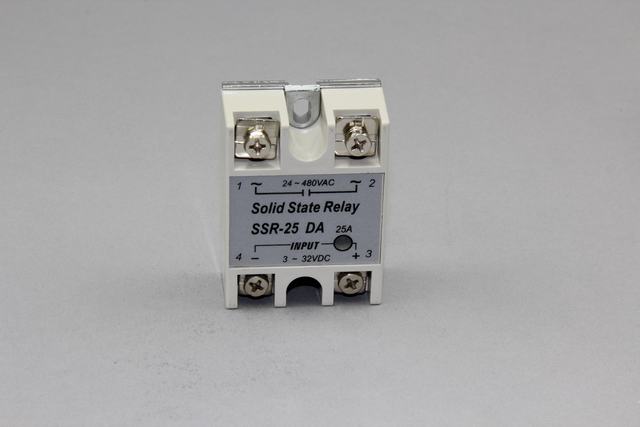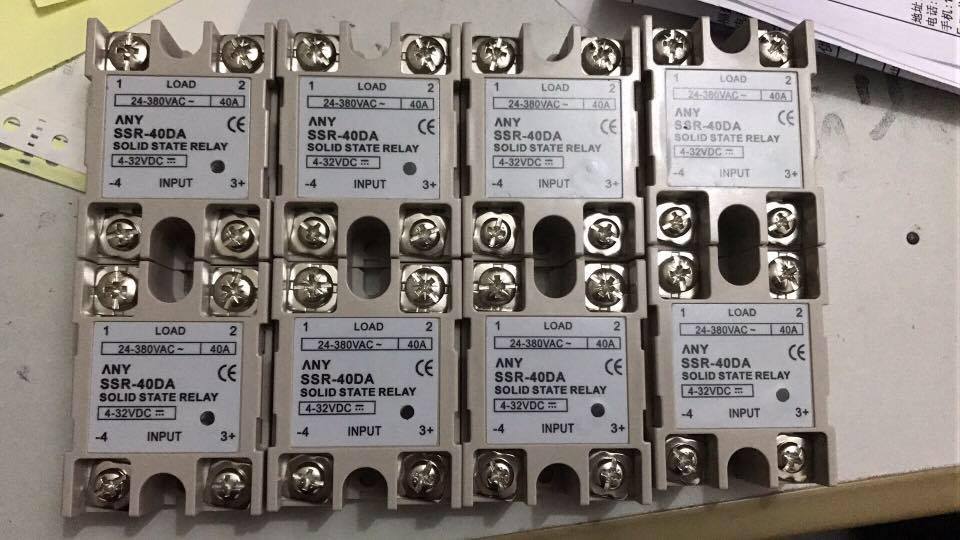What is a solid state relay?
Solid State Relay (SSR) is a non-contact switch consisting of microelectronic circuits, discrete electronic devices, and power electronic power devices. The isolation between the control terminal and the load terminal is realized by the isolation device. The input of the solid state relay uses a small control signal to directly drive a large current load.

Solid state relay (SOLIDSTATERELAYS, hereinafter abbreviated as “SSR”) is a new type of non-contact switching device consisting entirely of solid-state electronic components. It utilizes the switching characteristics of electronic components such as switching transistors and triacs. It can achieve the purpose of turning on and off the circuit without contact and without spark, so it is also called “contactless switch”. The solid state relay is a four-terminal active device in which two terminals are input control terminals and the other ends are output control terminals. It has both amplifying drive function and isolation function. It is suitable for driving high-power switch-type actuators. It has higher reliability than electromagnetic relays, and has no contact, long life and fast speed. It has little interference to the outside world. Widely used
What is the role of solid state relays?

Although the types of solid state relays on the market are numerous, their operation is basically similar. It mainly consists of three parts: input (control) circuit, drive circuit and output (load) circuit.
Dedicated solid state relays can have short-circuit protection, overload protection and over-temperature protection functions, and the combination logic-solidified package can realize the intelligent modules required by users and directly used in the control system. Solid state relays have been widely used in computer peripheral interface equipment, constant temperature systems, temperature regulation, electric furnace heating control, motor control, CNC machinery, remote control systems, industrial automation devices; signal lights, dimming, scintillators, lighting stage lighting control systems; instruments Instruments, medical equipment, copiers, automatic washing machines; automatic fire protection, security systems, and switches for power capacitors that are compensated for power factor of the grid, etc., and also in the use of explosion-proof, moisture-proof, and anti-corrosion applications in chemical and coal mines. .

The input circuit of the solid state relay provides a loop for the input control signal, making it the trigger source for the solid state relay. The input circuit of the solid state relay is mostly DC input, and the individual is the AC input. The DC input circuit is further divided into a resistive input and a constant current input. The input control current of the resistive input circuit varies linearly with the input voltage. The constant current input circuit, when the input voltage reaches a certain value, the current no longer increases significantly with the increase of the voltage. This relay can be applied to a relatively wide input voltage range.
The driving circuit of the solid state relay may include an isolation coupling circuit, a function circuit and a trigger circuit. Isolation coupling circuit, currently uses two types of circuit forms: optocoupler and high frequency transformer. Commonly used optocouplers are light-triode, light-two-way thyristor, light-diode array (light-volt), and the like. The high-frequency transformer is coupled to form a self-oscillating oscillation of about 10 MHz under a certain input voltage, and the high-frequency signal is transmitted to the transformer secondary through the transformer core. The functional circuit can include various functional circuits such as detection rectification, zero-crossing, acceleration, protection, and display. The function of the trigger circuit is to provide a trigger signal to the output device.

The output circuit of the solid state relay realizes the on/off switching of the solid state relay under the control of the trigger signal. The output circuit is mainly composed of an output device (chip) and an absorption circuit that acts as a transient suppression function, and sometimes includes a feedback circuit.

Advantages and disadvantages of solid state relays
advantage
1. High life, high reliability: Solid state relays have no mechanical parts, and the solid-state devices complete the contact function. Because there are no moving parts, they can work under high shock and vibration environment, due to the components that make up the solid state relay. The inherent characteristics determine the long life of the solid state relay and high reliability.
2. High sensitivity, low control power and good electromagnetic compatibility: Solid-state relays have a wide input voltage range and low drive power, and are compatible with most logic integrated circuits without the need for buffers or drivers.
Disadvantage
1. After the conduction, the tube voltage drop is large, the forward voltage of the thyristor or the bidirectional silicon control can reach 1~2V, and the saturation voltage drop of the high power transistor is also between 1~2V, the general power FET The on-resistance is also greater than the contact resistance of the mechanical contacts.
2. The semiconductor device can still have a leakage current of several microamperes to several milliamps after being turned off, so that ideal electrical isolation cannot be achieved.
3. Since the tube voltage drop is large, the power consumption and heat generation after conduction are also large, and the volume of the high-power solid-state relay is much larger than that of the electromagnetic relay of the same capacity, and the cost is also high.


















